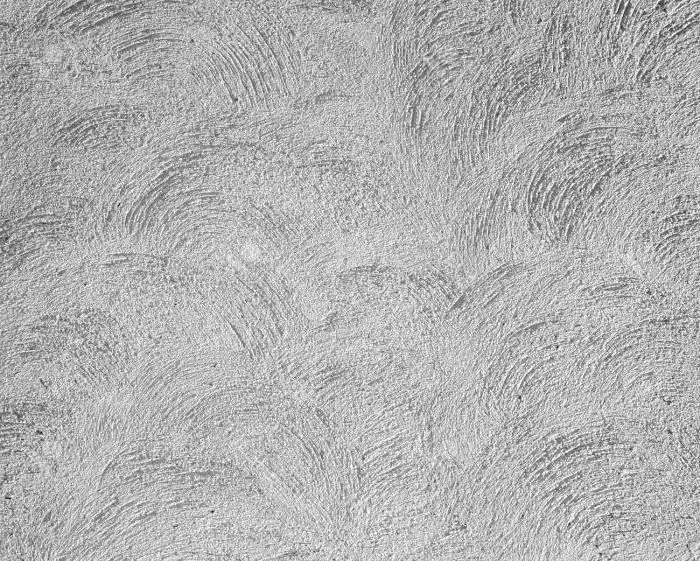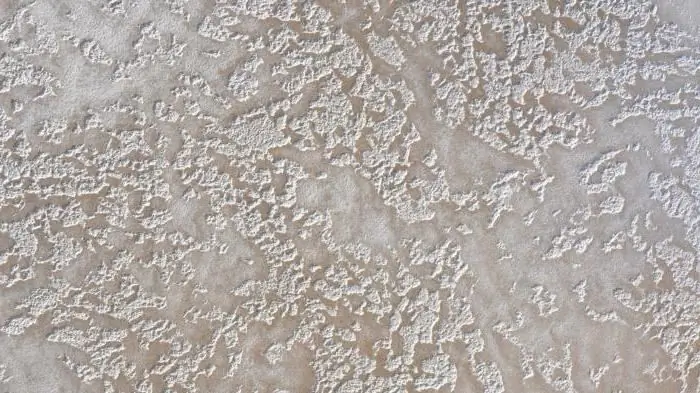Relief plaster is a finishing material widely used today for the implementation of arbitrarily bold design projects. Due to the unique composition, which includes special additives and binders, the coating can be presented in different configurations - this includes natural stone, cork, orange peel, and wood. Applying such plaster on your own allows you to show your creative abilities. You will be able to create a variety of embossed outlines and color shades, as well as patterns.
Selection Tips

Relief plaster today is offered for sale in a wide range. It may differ in structure, relief, as well as the quality of auxiliary additives. Other parameters can also be included here. However, the main classification is the division into bases and binders. This parameter is a priority, because the choice of finishing mixture takes place relative to it. And even if you strictly follow the recommendations for applying plaster, there is a chance of obtaining an unsatisfactory result. This can happen when the master has chosen a solution that is notcorresponds to the structural features of the wall. Blisters, cracks, as well as delamination and deterioration in the characteristics of materials can be identified as possible defects in the violation of technology. For example, if you choose relief plaster for a wall of aerated concrete, which is highly porous, then a prerequisite for the composition used is high vapor permeability. Otherwise, moisture will accumulate and destroy the coating, as well as the structure of the wall. This indicates the need for a competent selection of a solution that will match the base.
Recommendations from a specialist in choosing textured plaster

Relief plaster "Breeze" can be represented by a mineral base. The starting material is a dry mixture of cement, which is the main binder. Among the ingredients there are other auxiliary components that give relief and elasticity. Such plaster should be used in tandem with mineral surfaces. Textured plaster "Kadoro" can also be silicate, where liquid special glass acts as a binding base. This composition is characterized by high vapor permeability and is universal, as it is used for almost any surface. Among its additional characteristics, resistance to various kinds of influences can be distinguished. This is reflected in the price as well. You can buy this material in the form of a composition that is ready for application to the surface.
When to choose silicone plaster

Textured plaster "Celestia" can also contain a silicone base, it provides reliable adhesion, which is guaranteed by the presence of synthetic resins. Working with such a composition is quite simple, since the material is plastic. Among other things, the silicone mixture is suitable for mineral and other types of building structures. Plaster is used not only for interior surfaces indoors, but also for facades.
When to choose acrylic plaster

The composition of the plaster may suggest the presence of acrylic. This material has a consistency that is ready for finishing work. The coating is combined with the bases of the mineral content, which is concrete. Other types of grounds can also be included here. The binder is acrylic resin. The described compositions have textural features, recommendations for use, as a rule, are reflected on the packaging. Among other things, the consumer can obtain additional information from a consultant.
Variety of relief plaster coatings

Internal plaster, like external plaster, is divided into three main types, namely, a flat surface using stains and colored pigments, a textured composition using arbitrary application techniques, as well as a textured mixture with applying a finished pattern.
Preparation for work

It is necessary to take into account the fact that the textured composition is prone to the accumulation of moisture and dust, which is why it is recommended to use smooth reliefs in the kitchen. For the same reason, due to the high humidity in the bathroom, it is necessary to reliably and efficiently protect the surface using varnishes. Any textured mixture should be applied to the prepared surface. The wall should be leveled and coated with a primer. The latter is best chosen with deep penetration characteristics and dry the wall after using it. Some varieties of plasters allow you to ignore wall irregularities, but impressive differences in irregularities and levels must be eliminated in advance.
Preparation of tools

If you will be plastering walls in relief, it will be important to prepare the tools: a set of spatulas, an angled spatula, a plastering trowel, a trowel, a grater, a plumb line, a level and a rule. When choosing spatulas, you must be guided by several sizes, one of the tools should have dimensions of 30 centimeters, while the second - 10 centimeters.
Basic work
Relief decorative plaster must be applied according to a certain technology, which involves the distribution of the solution over the wall or part of the surface with the necessary layer. To do this, use a trowel. Special accuracy at this stage should not be observed, the main thing at the same time is the uniformity of thickness with a small error. The desired layer thickness is selected taking into account the requiredresult. Considering the height of the drawing, it is necessary to leave 1.5 millimeters thick under it. In order for you to understand how to apply plaster, it is best to experiment on a small area, you can use a piece of drywall for this. This will allow you to choose the required initial layer thickness and application technology.
If you purchased a ready-made composition, you should remember that it involves slow drying, this is to call the master to get more time for the formation of the pattern and even distribution. If you are using a traditional cement-gypsum or sand-cement mortar, it is best to determine your actions in advance and distribute the surface on the site, which you will perform gradually.
Invoice formation
Applying embossed plaster involves giving the surface texture. Depending on what result you want to get, you should choose a tool, as well as application technology. To obtain a certain texture, you can use rollers, ready-made stamps, brushes and spatulas. Quite often, craftsmen use hair rollers, after which a finished surface with a unique pattern is obtained. Alternatively, you can run a spatula over the finished surface, smoothing the plaster. Another option is the use of rollers, on the surface of which an ornament or pattern is applied. In this case, it is necessary to draw along the surface once along the entire length, or act in different directions.strokes, which will allow you to get a fragmented ornament. If you apply the plaster with a roller, you can achieve a reduction in material consumption.
Using alternative options for terrain shaping
Texture plaster can be applied, as mentioned above, with ready-made stamps. These are blanks of huge sizes, on the working basis of which there is an ornament or pattern. In the process of work, you should regularly clean the stamp from the mixture, wetting it with water. Quite often, such a tool comes with a soft rubber version, which allows you to bring the pattern to hard-to-reach parts of the walls.
If you use a simple spatula, finishing can turn a wall into an artist's canvas. The simplest option is to form a relief using the texture of a wild stone. You can deepen the spatula into the layer, getting the desired pattern. The same applies to clear instruments with teeth. You can do the derivation of the ornament yourself, but the result will be as effective as possible.
Decorating: the final stage
As soon as it is possible to give the texture of the surface of the plaster layer, it is possible to carry out measures to protect the wall and further design it. The master will have to make a primer, after which it is allowed to apply several layers of paint. The entire surface is painted with a color of a darker shade, while a long-haired roller should be used, it is sometimes replaced with a brush. Once the first coat is dry, you can use a short pile roller or tool with a flat rubberwork surface, with which you can apply lighter paint to the surface. This way you will give the color of the protruding part of the texture. If painting is not supposed to be done, which is true when using colored plaster, which contains pigments, the surface should still be covered with a protective layer. For this, colorless varnish is most often used.
Use of special formulations
The cost of plaster can be equal to 1100 rubles per 8 kilograms. It can be used with a variety of fillers that allow you to create the desired pattern. Thus, to form the “bark beetle” surface, polymer granules or granite chips are added to the ingredients. Such a composition is initially applied with a trowel to the entire surface, and then left until it sets. After that, it is necessary to go over the surface with a grater, which will stretch the crumbs and granules through the solution, forming specific grooves. You can also use the usual version, in which the grater is held horizontally or vertically. In this case, the furrows will be located in parallel. You can guide the grater along the path of a circle, which allows you to achieve a more unique and interesting pattern. The addition can be not just hard, but also soft granules that are filled with paint. In this case, the same application method can be used, which will differ from the previous one in that the granules will be crushed and the surface will be painted in different colors. The basis of the plaster may have more liquid solutions that will allow you to formdrip effect. A thicker composition allows you to form a high pattern. But keep in mind that the deeper the drawing, the faster it will accumulate dust.
Conclusion
Standard ready-made plasters are white, but varnish and colored pigments can be used to give a certain shade to the surface. If plasters of different colors are available, then surfaces with different compositions can be obtained. Moreover, even a novice master who does not have sufficient experience in carrying out such work can achieve such unusual results. It will be enough just to practice before applying the mixture to the wall. You can use drywall, which will allow you to gain experience and eliminate mistakes when working on the walls of any room in your home.






